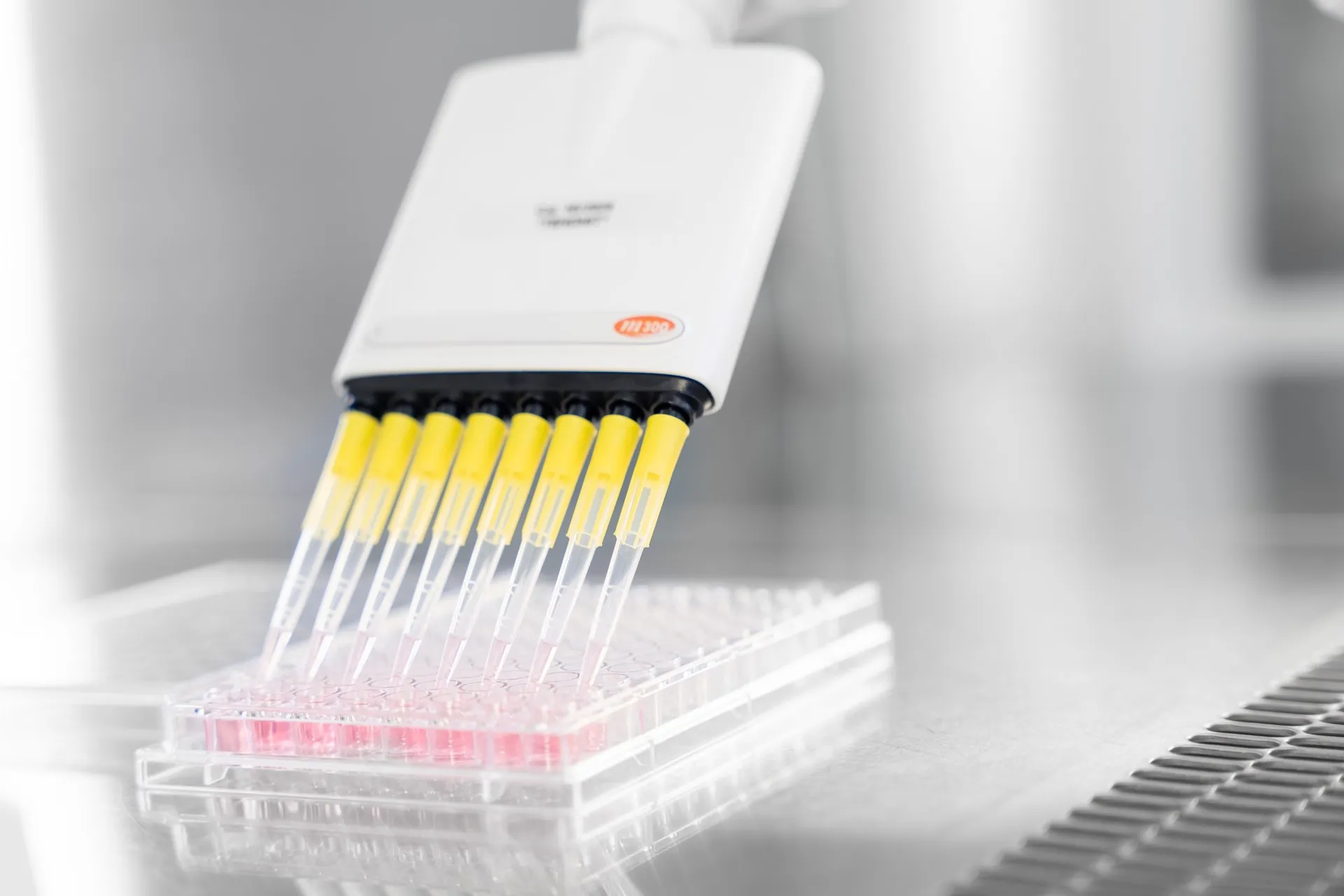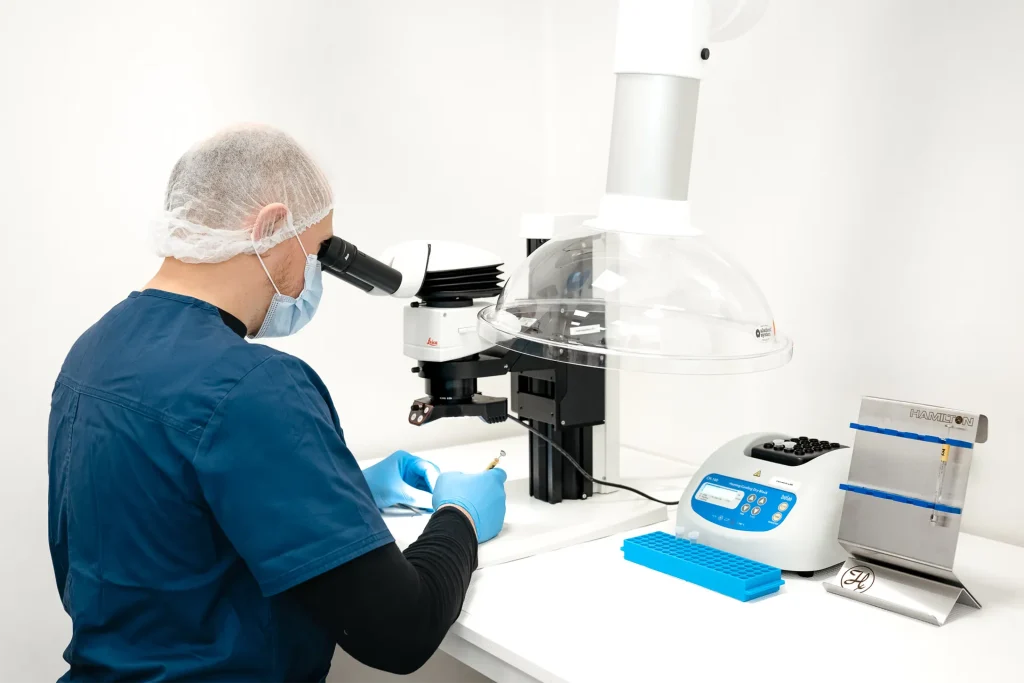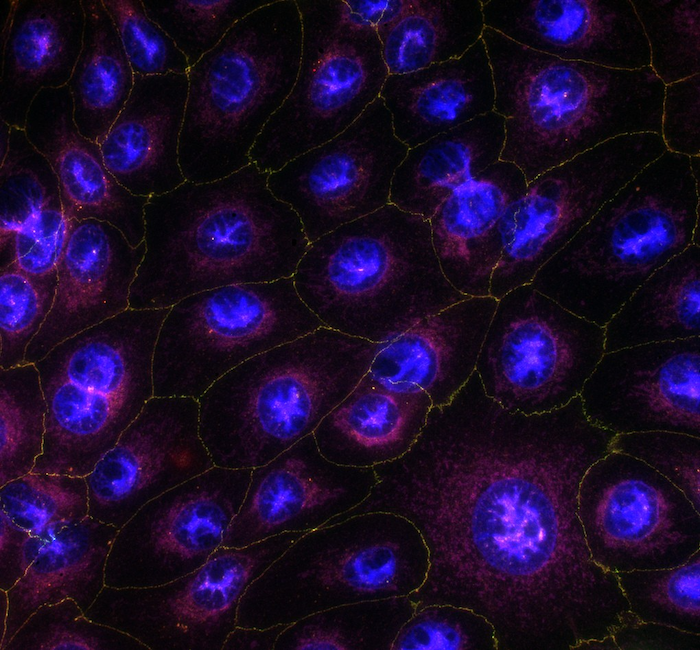In vitro models
In vitro tube formation assay
The in vitro tube formation assay is a well-established model for studying angiogenesis under controlled conditions. Originally described by Kubota et al.1 in 1988, this assay utilizes either human umbilical vein endothelial cells (HUVECs) or human retinal microvessel endothelial cells (HRMECs), which respond to angiogenic signals by migrating, aligning, and forming branched, capillary-like tubular networks on a basement membrane matrix. The tube formation assay is one of the most popular in vitro models to quantify angiogenesis using image analysis methods2-3.
This model is widely applied to evaluate pro- and anti-angiogenic compounds, as angiogenesis plays a critical role in physiological processes and pathological conditions such as tumor growth and ocular neovascularization. Experimentica’s assay uses VEGF-stimulated HUVECs or retina-specific HRMECs to mimic angiogenic signaling and applies automated image analysis to quantify parameters including total tube length, branching points and loops, and mean tube and loop dimensions.

Technical details
- Human umbilical vein endothelial cells (HUVECs)
- Human retinal microvessel endothelial cells (HRMECs)
Vascular endothelial cells growth factor (VEGF)-stimulated angiogenesis
Sulforaphane
Wimasis WimTube
Key Metrics:
– Total Tube Length
– Total Branching Points
– Total Loops
– Total Nets
Tube Characteristics:
– Total Tubes
– Mean Tube Length
– Loop Characteristics
– Mean Loop Area
– Mean Loop Perimeter
Highlights of this model
Physiological relevance
A widely used, predictable, comparable, model suitable for screening drugs effects on angiogenic processes
Accelerated drug discovery
Clinical relevance of experimental outcomes increased by cells originating from human tissue
Unbiased automated read-out analysis
Fast isolation, culture, and expansion allow for unbiased and automated screening
References
- Kubota Y, Kleinman HK, Martin GR, Lawley TJ. Role of laminin and basement membrane in the morphological differentiation of human endothelial cells into capillary-like structures. J Cell Biol. 1988;107(4):1589-1598.
- McGonigle, S. and Shifrin, V. In Vitro Assay of Angiogenesis: Inhibition of Capillary Tube Formation. Curr. Protoc. Pharmacol. 2008;43:12.12.1-12.12.7.
- Khoo CP, Micklem K, Watt SM. A comparison of methods for quantifying angiogenesis in the Matrigel assay in vitro. Tissue Eng Part C Methods. 2011;17(9):895-906.
We are here to help
Whether you have a question about our preclinical models, capabilities, pricing or anything else, our team is ready to answer all your inquiries.
Related services
AI for image analysis
AI-driven image analysis for in vivo studies, delivering faster, unbiased results and deeper insights for your preclinical ocular programs.
Learn moreImmunohistochemistry
Experimentica offers a wide range of single and multiplex immunofluorescence labeling to explore disease pathogenesis and therapeutic targets.
Learn moreHistological staining
Histological staining techniques for ocular and nervous system tissues to support detailed analysis.
Learn moreELISA
ELISA enables sensitive protein detection and quantification in ocular tissues and biofluids.
Learn moreRT-qPCR
qPCR measures gene expression in ocular tissues, supporting disease research and treatment evaluation.
Learn moreWestern Blotting
Western blot detects protein expression and modifications in ocular tissues with high sensitivity and precision
Learn moreCheck out our latest news and activities
All News






